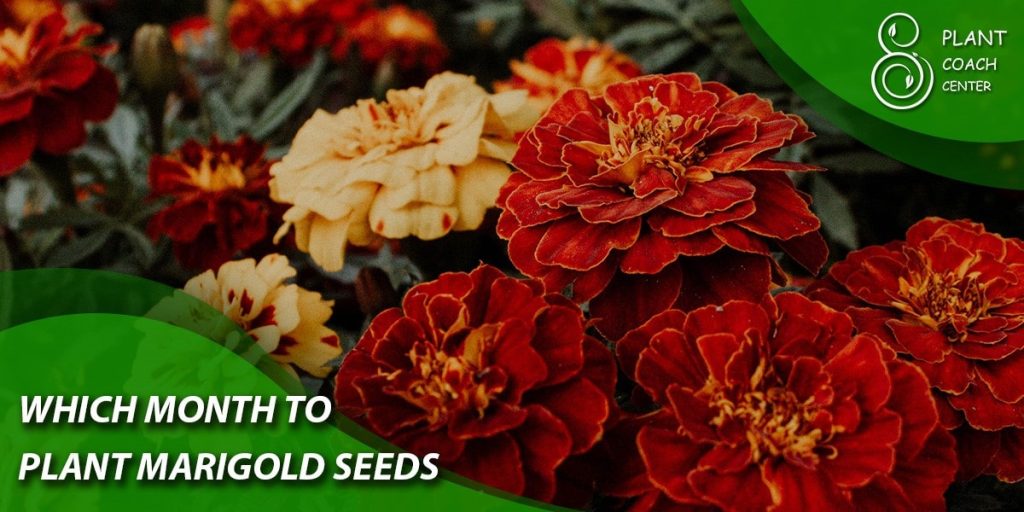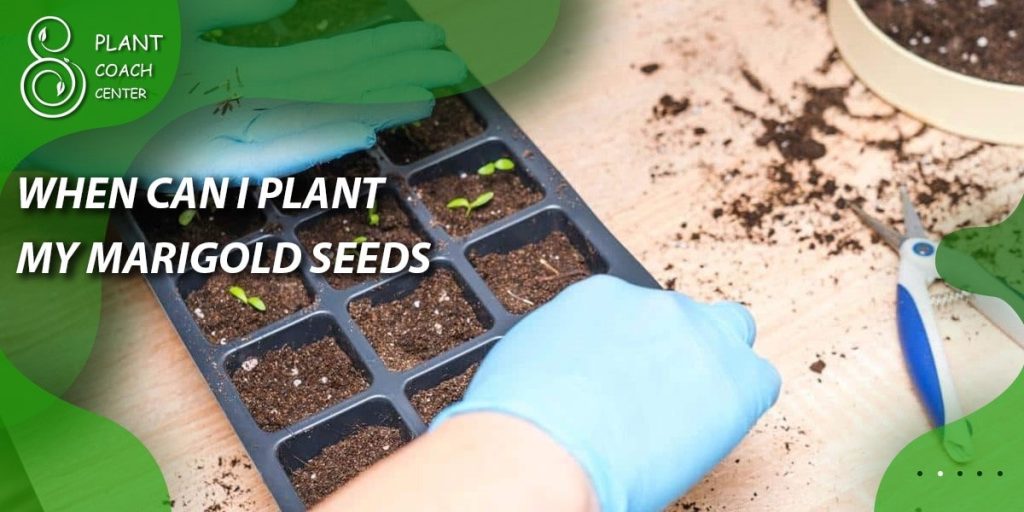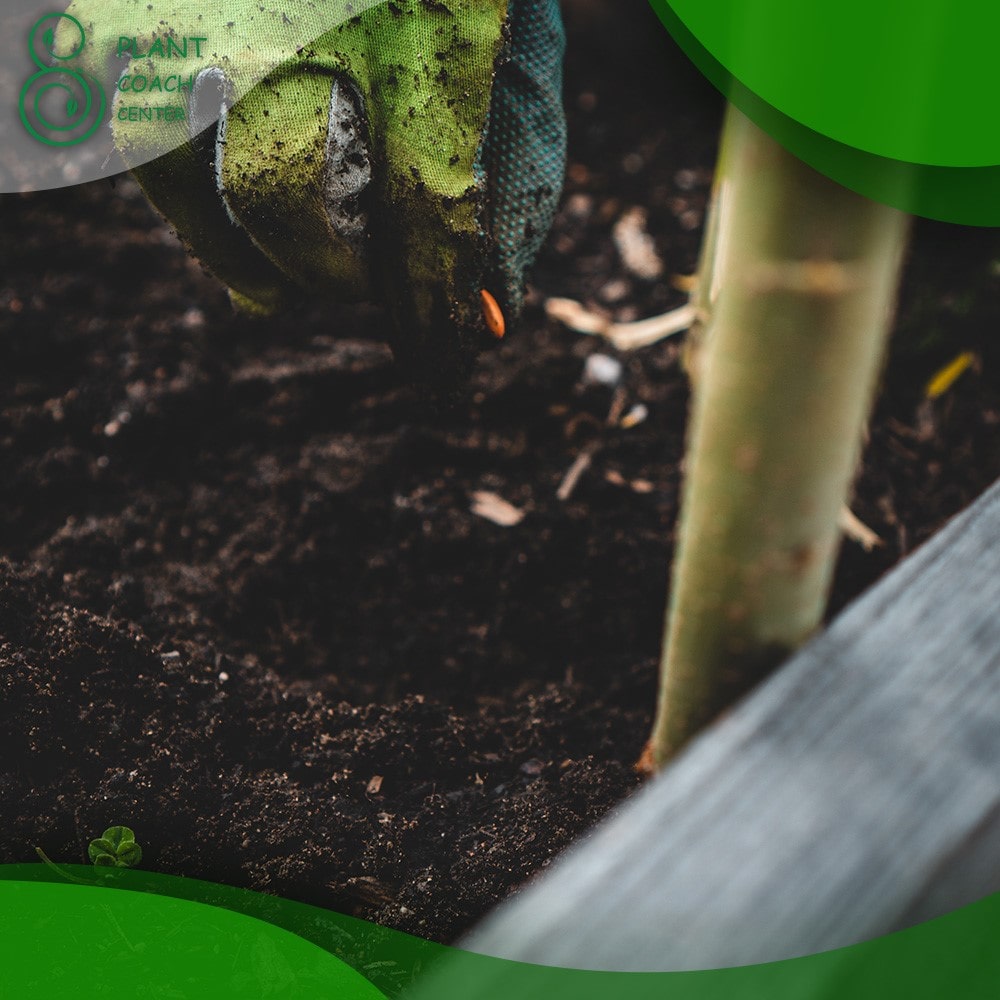When Do You Plant Marigold Seeds?

Welcome to the vibrant world of marigolds, where nature’s dazzling hues come to life in these cheerful blossoms. Whether you’re an experienced gardener or just embarking on your green-thumb journey, the question of when to plant marigold seeds is crucial. Marigolds hold a special place in gardens and landscapes worldwide with their sun-kissed petals and distinctive aroma.
The timing of planting marigold seeds can significantly impact their growth, bloom duration, and overall vitality. By understanding the intricate dance between seasons, environmental cues, and regional idiosyncrasies, you can unlock the secrets to successfully nurturing marigold seeds into flourishing, radiant flowers.
In this article, we’ll embark on a journey through the seasons, decoding Mother Nature’s signs and equipping you with insights to make informed decisions whether you’re starting your marigold seeds indoors, in containers on your windowsill, or directly in your garden beds. So, let’s dig into the art and science of marigold planting and watch your landscape come alive with the golden, orange, and coppery splendor that these blooms bring.
Unlocking Marigold Magic: Understanding the Optimal Planting Time
Choosing the right time to plant marigold seeds is akin to conducting a symphony where nature’s rhythm plays a vital role. The optimal planting time varies depending on your location and climate zone. Still, there are general guidelines to follow that will help you synchronize your gardening efforts with nature’s clock.
In regions with colder climates, where frost is a concern, it’s essential to wait until the threat of frost has passed before sowing marigold seeds directly into the ground. Marigolds thrive in warmer conditions, so soil temperatures should ideally be around 50 to 70°F (10 to 21°C) for successful germination. This often translates to planting in late spring or early summer.
Conversely, if you reside in a region with a milder climate, you might have the luxury of extending the marigold planting window. In such areas, you could sow marigold seeds for early spring blooms in the fall, taking advantage of the cooler temperatures to promote robust root development.
One universal clue for timing marigold planting is your area’s last expected frost date. Research or consult local gardening resources to pinpoint this date and work backward, giving your marigold seeds ample time to establish themselves indoors if necessary.
Remember that marigolds are sun-worshippers, so ensure you’re planting them when they’ll receive the required hours of sunlight as they grow. As you embark on your marigold planting journey, consider the dance of temperature, sunlight, and local frost patterns to orchestrate the perfect planting time and set the stage for a spectacular marigold display.
Seasonal Symphony: Navigating the Four Seasons for Marigold Planting
Just as a symphony unfolds in distinct movements, each season offers a unique tempo and melody for planting marigold seeds. By understanding the nuances of each season, you can strategically time your planting efforts to make the most of nature’s rhythms.
Spring Serenade: Rebirth and Renewal
As winter’s grip loosens, spring becomes an opportune time to sow marigold seeds. The warming temperatures and lengthening days provide the perfect backdrop for germination. Starting marigold seeds indoors during late winter can give you a head start, ensuring robust seedlings are ready for transplantation once frost risks subside.
Directly sowing in early spring can lead to early summer blooms in warmer climates, infusing your garden with vibrant colors.
Summer Crescendo: Full Bloom Extravaganza
For many, marigolds are synonymous with summer’s vibrant charm. If you missed the spring window, fear not—early summer remains an excellent time for sowing marigold seeds directly in well-prepared soil. The ample sunlight and warmth will swiftly nurture your plants, setting the stage for a mid to late-summer spectacle of dazzling flowers.

Autumn Interlude: A Second Chance
As summer transitions to fall, seize the chance for a second act by sowing marigold seeds in preparation for next year. Marigolds can sometimes overwinter and re-bloom in the spring in areas with mild winters, extending their seasonal presence. Fall planting allows the plants to establish strong roots before winter, ensuring a robust display in the following growing season.
Winter Reflection: Planning and Preparation
Though marigold planting doesn’t typically happen in winter’s frosty embrace, this season offers valuable time for reflection and planning. Research, sketch garden layouts, and source heirloom marigold seed varieties so you’re ready to dive into the soil once the frost thaws.
Reading Nature’s Signs: Key Environmental Indicators for Marigold Planting
Nature is an intricate storyteller, and deciphering its cues can lead to successful marigold planting. Environmental indicators provide invaluable insights into the optimal timing for sowing marigold seeds, ensuring that your efforts align harmoniously with the natural world.
Temperature Talk: Germination Guardians
Temperature plays a pivotal role in marigold germination. A soil thermometer becomes your ally, revealing when the earth has warmed sufficiently for seeds to sprout. Marigolds revel in warmth, with soil temperatures around 50 to 70°F (10 to 21°C) ideal. In regions with fluctuating weather, waiting until the nights are consistently above 50°F (10°C) can help prevent seedlings from being stunted by unexpected cold snaps.
Daylight Dialog: Photoperiod Phases
Marigolds are daylight-sensitive plants, and their growth is influenced by the length of the day. Longer daylight hours in spring and summer signal optimal conditions for growth and flowering. Remember that if you’re starting marigold seeds indoors, providing supplemental light can help mimic these conditions and encourage vigorous, healthy seedlings.
Frost Whispers: Protecting Tender Seedlings
Frost, an icy breath of winter, can be detrimental to young marigold seedlings. Before direct sowing, pay heed to your local frost dates. After the last frost date, the soil has warmed sufficiently for marigolds to flourish. However, sudden cold snaps can still occur, so keeping a frost cloth or other protective measures on hand is prudent to shield your tender plants.
Natural Symphony: Observing Planting Partners
In the garden, plants often share their preferences through companionship. Observing the emergence of certain wildflowers or indicators of seasonal changes can signal the right time for marigold planting. Nature’s choreography guides you, helping you anticipate the ideal moment to sow your marigold seeds.

Planning for Success: Tips for Indoor and Outdoor Seed Starting
Whether you’re an urban gardener with limited space or someone eager to jump-start the growing season, understanding the nuances of indoor and outdoor seed starting for marigolds can set the stage for a flourishing garden.
Indoor Ensemble: Controlled Nurturing
Starting marigold seeds indoors grants you greater control over the early stages of growth. Begin 6 to 8 weeks before your local frost date, ensuring sturdy seedlings by the time it’s safe to transplant them outdoors. Opt for a well-draining seed-starting mix and provide consistent moisture.
Employ grow lights to replicate the sun’s intensity, adjusting their height as seedlings grow. As the last frost approaches, gradually acclimate seedlings to outdoor conditions before transplanting, allowing them to adapt to the new environment.
Outdoor Overture: Direct Sowing Delights
Directly sowing marigold seeds into prepared outdoor beds is a straightforward approach, well-suited for regions with mild climates. Wait until after the last frost date, then choose a sunny location with well-draining soil. Gently rake the soil surface to create a fine tilth, and sow the seeds at the recommended depth.
Cover the bases with soil and water gently. Thin the seedlings once they’re a few inches tall, giving them adequate space to flourish.
Timing Tango: Coordinating Both Approaches
A dynamic strategy involves a combination of indoor and outdoor planting. Start some marigold seeds indoors for an early blooming showcase while simultaneously sowing seeds directly outdoors for a staggered, extended bloom period. This orchestration requires careful planning and consideration of local conditions, but the rewards are a prolonged marigold spectacle that spans the growing season.
Local Wisdom: Adapting Marigold Planting to Your Geographic Region
Gardening isn’t just a hobby; it’s a partnership between you and your unique environment. Regarding marigold planting, tapping into local wisdom and adapting your approach to your geographic region can yield a blooming masterpiece tailored to your specific landscape.
Zone Zenith: Navigating Hardiness Zones
The hardiness zone map is one of the most valuable tools for adapting marigold planting. Understanding your zone provides insights into average annual minimum temperatures, helping you determine when to plant marigold seeds to avoid frost damage. Choose marigold varieties that thrive in your zone’s specific conditions, ensuring a resilient and vibrant display.
Microclimate Musings: Unveiling Hidden Gems
Within your larger geographic region, microclimates can create pockets of unique conditions. South-facing slopes might warm earlier in the year, allowing earlier marigold planting. Conversely, cooler, shaded areas might benefit from later planting to avoid frost risks. By identifying and leveraging these microclimates, you can optimize marigold planting times for various spots in your garden.
Local Gardener Insights: Community Collaboration
Engage with local gardening clubs, forums, or neighbors to gather insights from experienced gardeners. They can offer valuable advice based on years of trial and error in your region. Discovering planting strategies, success stories, and challenges others face can be instrumental in refining your marigold planting timeline.
Weather Watch: Predicting Nature’s Moves
Staying attuned to local weather patterns is a game-changer. Monitor weather forecasts, especially in spring, to anticipate sudden cold snaps that could harm young marigold seedlings. Additionally, be mindful of precipitation patterns to ensure your seeds receive the proper moisture balance as they germinate and grow.
Historical Horticulture: Learning from Tradition
Local gardening history can provide hidden gems of wisdom. Research traditional planting times and practices specific to your area. Indigenous communities and long-standing gardening traditions often hold knowledge passed down through generations that can offer valuable insights into marigold planting and care.

Beyond the Soil: Factors Influencing Marigold Growth Post-Planting
While the soil lays the foundation for marigold growth, a symphony of factors comes into play once the seeds are sown. Understanding these influences, from sunlight to water and nutrients to potential challenges, is critical to nurturing vibrant marigold blooms.
Solar Serenade: Sunlight’s Vital Role
Marigolds are sun-lovers; ample sunlight is essential for robust growth and vibrant blooms. Plant them in a location that receives at least 6 hours of direct sunlight daily. A touch of afternoon shade can prevent stress and enhance bloom longevity in areas with scorching summers.
Hydration Harmony: Watering Wisely
Balancing hydration is an art. Marigolds prefer well-draining soil, as waterlogged roots can lead to root rot. Water deeply when the top inch of soil feels dry, avoiding overhead watering that can lead to fungal issues. Early morning watering allows foliage to dry during the day, preventing disease.
Feeding Finesse: Nutrient Boosts
Marigolds are relatively low-maintenance plants, but a balanced fertilizer can enhance their vitality. A slow-release granular fertilizer or a diluted liquid fertilizer every few weeks during the growing season can promote healthy foliage and prolific blooms. However, avoid excessive nitrogen, leading to lush greenery but fewer flowers.
Pest and Predator Dance: Vigilance and Prevention
Marigolds’ distinctive scent deters many pests, making them a popular companion plant in vegetable gardens. However, be watchful for aphids, spider mites, and whiteflies. Regular inspection and early intervention, such as using insecticidal soap or neem oil, can prevent infestations from taking hold.
Disease Defenses: Early Detection and Treatment
While marigolds are generally resilient, they can fall victim to diseases like powdery mildew or fungal infections in humid conditions. Proper spacing for good airflow and avoiding overhead watering can help prevent these issues. If signs of illness appear, treat with appropriate fungicides to stop the spread.
Deadheading Drama: Promoting Prolonged Blooms
To encourage continuous blooming, practice deadheading—removing spent flowers. This prevents the plant from directing energy into seed production and promotes new bloom growth. Regular deadheading prolongs the blooming period and keeps your marigold beds looking tidy.
Weather Whims: Adapting to Environmental Changes
Nature is capricious, and weather fluctuations can impact marigolds. Be prepared for sudden temperature drops or heavy rains that might damage delicate flowers. Having frost cloths and supports ready can help protect your marigolds during unexpected weather events.

Conclusion
In the enchanting realm of marigold planting, timing truly is everything. As you embark on your marigold journey, remember that every landscape has its own story, and each gardener becomes a narrator, crafting a unique tale of vibrant blooms.
Whether deciphering nature’s signals, orchestrating the dance between indoor and outdoor cultivation, adapting to local wisdom, or tending to the myriad post-planting influences, marigolds invite you to immerse yourself in the art of nurturing life.
With the insights from this article, sourced from the wealth of knowledge at your fingertips on plantcouchcenter.com, you’re poised to transform your garden into a canvas of marigold magic. So, roll up your sleeves, heed the wisdom of seasons and local communities, and let your marigolds flourish into a symphony of color that resonates with the heartbeats of the earth. Happy planting!
When is the best time to plant marigold seeds?
Plant marigold seeds after the last frost date in your area, when soil temperatures are around 50 to 70°F (10 to 21°C).
Can I start marigold seeds indoors?
Absolutely! Indoor seeding 6 to 8 weeks before the last frost date helps you get a head start on the growing season.
What's the key to prolonged marigold blooms?
Regular deadheading (removing spent flowers) encourages continuous seasonal bloom.







